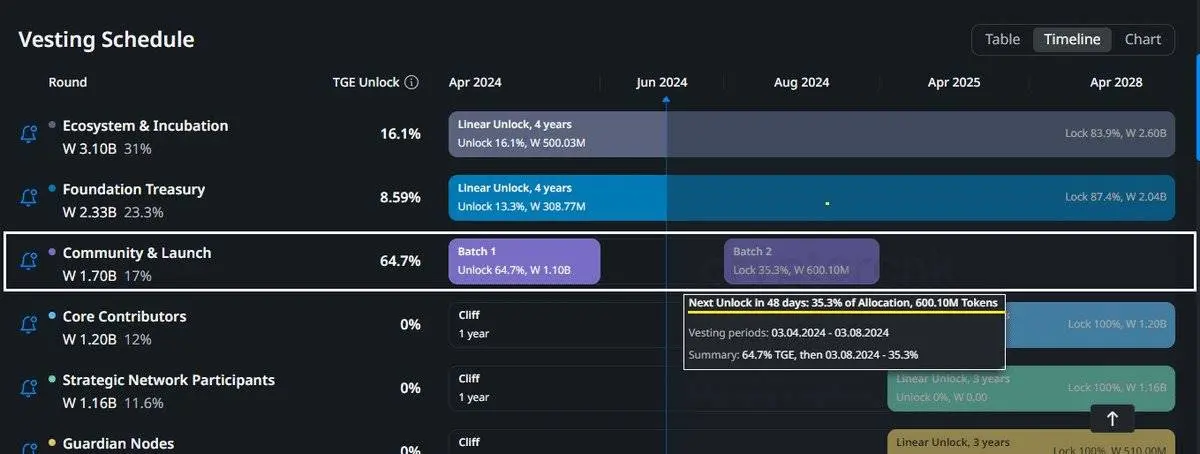Airdrops are not dead, but please do not excessively chase popular projects
Original source: Axel Bitblaze X account
Author: Axel Bitblaze
Compiled by: Deep Tide TechFlow
With the completion of all major airdrops (such as $ZRO and $ZK), the sentiment around airdrops seems to have cooled down. So, is the airdrop beta over? Are they still worth farming? What’s next for airdrops? I will share my thoughts in this tweet.

What’s next for airdrops?
A few months ago, I wrote an article about the "current airdrop beta," mentioning that there were three major airdrop projects yet to launch, and now they have all been completed. Here are my views on the upcoming beta.

(See tweet for details)
Are airdrops dead?
In short, no. The longer answer is that the situation with airdrops will change.
You can understand it this way: in games, there are always those overpowered cheats or strategies that, when too many players start using or abusing them, will eventually be nerfed.
Airdrops are the same; old methods will be nerfed, but that doesn’t mean the game is over.

Before we begin, let’s analyze which factors have the most significant impact on airdrops and how to leverage these factors:
Funding and valuation;
The degree of hype and dilution;
Market sentiment and FDV at the time of release;
Now, there is a lot of talk about FDV at the time of release, but I think this is a bigger dilemma:
Retail investors want projects to launch at a lower FDV so they can bid on new tokens and profit.
Airdrop hunters want a higher FDV so they can sell when the tokens are released.

Projects are squeezed from both sides:
Retail investors: "Your token is too expensive. I won’t provide exit liquidity for the airdrop hunters."
Airdrop hunters/community: "Launch at a good FDV price, or else the airdrop is peanuts, and we will heavily manipulate you."

What’s the current situation? It’s a battle between projects and airdrop hunters.
The project side tries to avoid letting airdrop hunters exit easily while pleasing retail investors by launching at a lower FDV.
Nowadays, even T1 CEXs are more inclined to release tokens at a lower FDV. Retail wins, and you can get VC valuations without attribution.

Recently launched $ZK and $ZRO are examples of this, along with market conditions.
I feel they don’t want to give airdrop hunters a high exit but rather want to sell at a lower valuation and then dump heavily later like $SEI and $SUI.

While the cases of $W, $DYM, and $STRK are different, they launched at extremely high FDVs (fully diluted valuations) and gradually lost value.
Those who received airdrops were happy, but there were almost no market buyers at those valuations. Even staking failed to stop the value drop of $W.

So, factor 1 is actually out of our control. We need to focus on the factors we can control.
The reason I say this is a good adjustment and that strategies need to change is that the current market environment has been severely inflated by certain specific standards, leading to market imbalance.
I am reminded of the same scenario in the early ICO era, where most IDOs (Initial Decentralized Offerings) could achieve returns of 100-500 times, and people could make a lot of money with an investment of $50-100.
The same situation occurred in early airdrops, where by spending $50-100 in fees, we could get 100 times returns from airdrop tokens, equivalent to $5000 in profit.
Later, this evolved into a "pay-to-win" situation:
For IDOs: Stake our Launchpad tokens to get allocations.
For airdrops: Provide liquidity on our chain/protocol and lock funds.
What’s the downside?
For IDOs, when the music stops, the tokens lose value. For airdrops, you need to pray that the protocol doesn’t get hacked.

Anyway, let’s keep going.
Projects may choose linear airdrops, which are not ideal for small-fund airdrop hunters, so this is another dilemma.
If you have enough funds, then linear airdrops may suit you.

(See tweet for details)
For low-cap investors:
As the market environment changes, we need to change some habits:
Stop excessively chasing popular airdrops.
Stop using those useless Dune dashboards to check rankings; they only exaggerate random metrics.

None of your favorite protocols use these metrics.
I think these dashboards just create a mindset that "I haven’t farmed well," and then you get caught in a vicious cycle to improve rankings, wasting unnecessary fees and time to meet those random standards.
For low-cap farmers, there are two strategies:
Sybil attack low-tier allocations: Get small allocations through multiple accounts.
Look for projects that are not very popular but have good funding, and participate early.
I think farming low-tier allocations is a good risk-reward strategy; you spend less in fees and time but still get decent returns.
Historical success cases of low-tier allocations:
Etherfi: A last-day deposit earned you $900.
Eigenlayer: Invested only $1 in Eigenlayer to receive 110 tokens.
Jupiter: A few Solana interactions earned 200 $JUP tokens and $WEN.
Imagine spending $50 to buy Pendle YT, which qualifies you for $800 worth of $ETHFI and 110 $EIGEN.

Even in the worst-case scenario, if the project fully linear allocates, you haven’t wasted too much time or funds on low-tier farming, so the disappointment won’t be too great.
For those long-term farming high-tier projects (like $ZRO):
If in the end, you find yourself with someone who has a similar low-tier allocation, it may feel not worth it.

Factor 2: Dilution (or number of airdrop hunters)
As the number of participants increases, dilution becomes real and rapid.
Therefore, the next trend is to farm those projects that have raised a considerable amount of funds but are not very popular (there are many such projects).

The fewer airdrop hunters there are, the more tokens each wallet is allocated.
In this case, FDV (fully diluted valuation) is not that important because the tokens are basically allocated to a few farmers.
@KintoXYZ has also done similar work and may have good results.
Example: Suppose two projects each airdrop 5% of their supply
Popular project: Allocated to 100,000 people, requiring a high FDV (fully diluted valuation) to satisfy these 100,000 people.
Unpopular project: Allocated to 10,000 people, only needing a reasonable FDV.
The real question is: how to find these treasure projects?
The best tool is Cryptorank.
Use filters, for example, if you want to search for projects on Solana that don’t have tokens, go into the filter > Sol ecosystem.
Now you need to further filter based on the type of protocol you want to farm.

(See video for details)
I usually filter by: Bridge/DeFi/DEX, as these protocols have more on-chain interactions, and participating early can leave a good footprint.

(See video for details)
Once you find a project, check its activity: look at their profile activity: Are there any events happening? How many people are participating?
Which projects are most likely to release tokens?
Many protocols have raised a lot of funds, but their valuations are unknown.
I prioritize them in the following order:
Projects with known valuations: This can give you a rough idea of the FDV at the time of release.
Projects backed by specific VCs: More content will be discussed in future posts.

Some VCs are obvious choices. I plan to write a dedicated post discussing this, but from the perspective of airdrops, I am mainly interested in projects supported by the following VCs: Jump, Binance, and Multicoin Capital.
Most of these VCs are clearly investing for tokens, and projects recently supported by Binance have performed well.
Unusual Factoriooo: Second round airdrops
I don’t think we have seen a wave of this kind of airdrop yet, but they have potential, and I have seen this strategy work well.
80% of people leave the protocol after the first token generation event (TGE) because they only received a small amount of tokens, but a portion of people still remain.

We all laugh at the metrics of projects after TGE, but does this mean there are fewer airdrop hunters now?
Even if the token release performs poorly, there is still hope for a rebound and excellent performance like $SEI.
Perhaps we can farm those that will allocate a large supply for the second round of airdrops. For example:
Parcl: It’s now very easy to rank through LP since PVP has ended, and it can still rise if Solana goes up.
Wormhole: The next community airdrop will unlock in a few weeks, and the trading volume is currently very low.

Final factor: advantages and research
The current dilution is real, which is different from the original airdrop period when awareness was lower.
It’s best to participate early, carefully research projects, and check if the white paper mentions tokens. Get some early roles/OATs.
Even if later diluted, it’s okay; we remember sharing Elixir in Discord when no one was farming it, but it later became popular. But we got some early roles then and left an initial footprint, which may help with airdrops.
For example: Lista DAO provided a nice airdrop for early OAT holders.

In the current market environment, extracting maximum value is key, and there are no shortcuts. Many projects will bring you thousands of dollars in airdrop profits through low-investment operations.
Prioritize upcoming projects instead of medium to long-term projects that last two years.
Shift four-figure profits into trending topics or trends, such as meme coins and AI, rather than larger farming projects.
If you are a beginner or a low-cap airdrop hunter, the best strategy is:
Obtain low-investment three to four-figure airdrops.
Shift these profits into trending topics like meme coins, AI, etc., rather than larger airdrop projects like ZRO and ZK.

We are approaching the market bottom, and altcoins are about to start rising significantly. Don’t give up, and don’t lock your liquidity in unnecessary long-term farming.
Making money in a unidirectional rising market is relatively easy.
In summary, airdrops are not dead.
But don’t excessively chase popular airdrops for Dune dashboards.
Try to farm low-tier allocations (with a good risk-reward ratio).
Research those that are not hot but are well-funded and have excellent products, and participate early.










